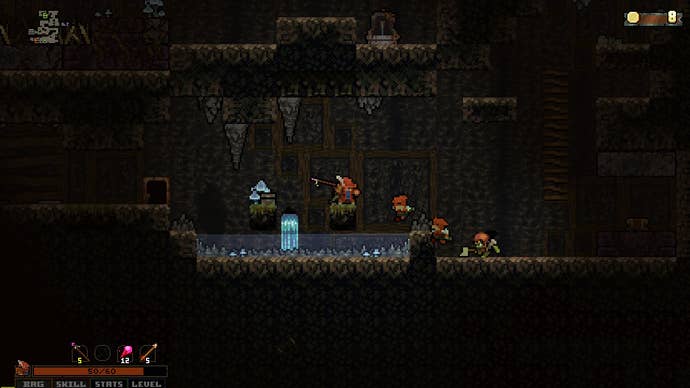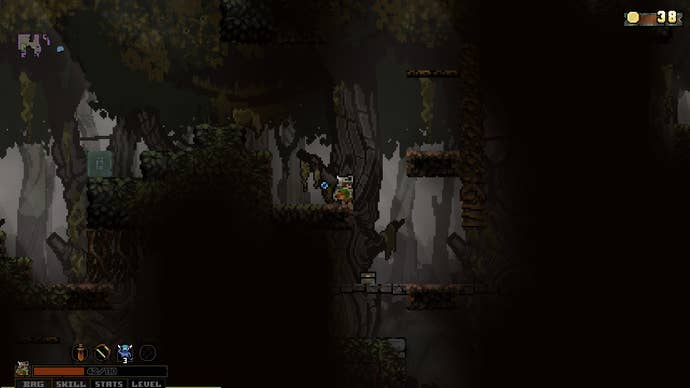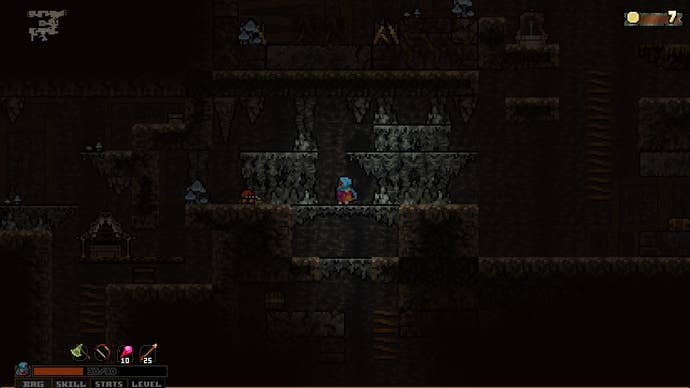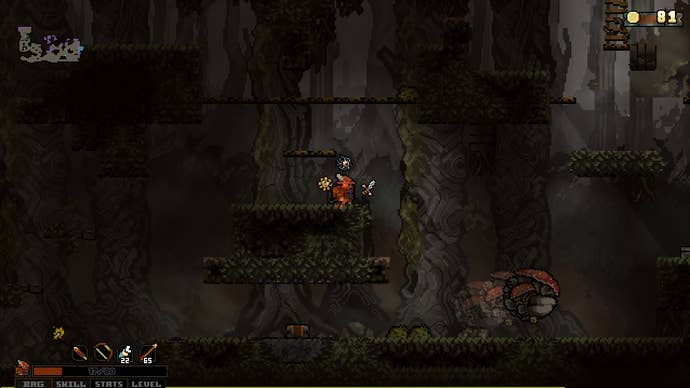For a genre defined by unpredictability, roguelikes often sound staggeringly boring.
They are also firmly systems-led to the point of dryness.
I probably don’t need to tell you that it’s a pixelart affair.

Vagante is gloomy, but the gloominess grows on you.
It glows like an illuminated manuscript.
But after that come the Catacombs, which - well, you could imagine.

But after a while your eyes adjust.
There’s a neat crossover here between aesthetic appreciation and more practical objectives.
Vagante is strangely non-frustrating- for a game that has such an unwholesome fixation with traps.

Tsk tsk, those spikes!
Wherever will they turn up next?
Perhaps it’s the Stockholm syndrome talking but the traps never feel unfair, however unexpected.

Speaking of which…
Vagante has seriously bendy classes.
Your wizard might chance on a really sweet hammer that spits homing orbs and leeches health.
The Rogue can be a somersaulting archer or a light-fingered ghost.

The Wildling can be a punch-drunk berserker or a ninja druid.
The Houndmaster can do all kinds of things with dogs, often to the dog’s distress.
“Ascetic” buffs your stats each level, the longer you do without equipment, for example.

Vagante is a feast of traversal styles.
The variety between builds is most pronounced in how you probe and move about each procedural layout.
Dash and teleport spells let you bypass chokepoints, once you work out their ranges.

There’s gear that lets you breathe underwater, or phase through walls.
Weapons, too, shape your understanding of the geography.
Vagante has sneakily destructible environments.

I was a few hours in when I realised that water has physics and volume.
Don’t get me wrong - this isn’t Noita.
The deformation is a long way from game-breaking, but in some ways, that makes it more compelling.

Vagante is about objects that lie to you.
What does this strange new broadsword do?
What’s this inviting violet shade of potion?

Oh heck, it’s just chopped your Fire Resistance in half.
As I have discovered the hard way, a green brew isn’t always a Potion of Regen.
Watch out, though - the results won’t always be beneficial either.

Vagante has a brutal mid-game difficulty bump.
Vagante lets you do things when you’re dead.
Skeleton players get their flesh and blood back between levels, thankfully.
Vagante has a mysterious caravan driver.
He’s there in bottom-left every time you start a run, gazing grimly off-screen.
How many more lost souls does he have tucked away in the Tardis-like depths of that covered wagon?
Was he once an adventurer himself?
Does he feel the slightest remorse about his actions?
When will it end?
Also, do his mules have names and why can’t I pet them?
Vagante is, all told, the definition of a hidden gem.
Albeit one you should definitely use an Identify scroll on before equipping.
Vagante is an elaborate little Swiss Army knife indeed, though arguably short of a headline feature.
Nor does it have the personality and sex appeal of Hades, or the conceptual ingenuity of Loop Hero.
But thanks to its deceptive straightforwardness, it feels easier to pick up than many of its peers.
On which note, it’s lunchtime.
I’m off for another trip through the caves.